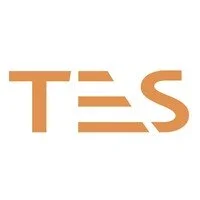OLEC 1 Overhead Line Equipment Construction 1
Initial / Recert
Course Summary
This module is designed to familiarise persons who are new to OLE Engineering and whose work may involve or interact with OLE construction activities.
It is designed to develop a person’s knowledge and understanding as defined in module OLEC1 of Network Rail Specification NR/L2/CTM/028 Competence and Training in OLE Construction Engineering.
Course Aim
The aim of the course is to instruct delegates on correctly determining their responsibilities and duties when working on or near the line.
Pre-requisites & Requirements
Delegates must:
Must be a minimum age of 16.
Additional Information
All PPE must meet the requirements of NR/L2/OHS/21 and RIS-3279-TOM and as a minimum be equipped with:-
High visibility upper body clothing with reflective tape, with Sentinel Sponsor Logo
High visibility lower body clothing with reflective tape
A safety helmet with Sentinel Sponsor Logo
Safety footwear to support ankle and protective toe cap
Suitable safety eyewear
Suitable safety gloves
What Can You Do With OLEC 1?
OLEC 1 stands for Overhead Line Electrification Competence Level 1. This is a fundamental entry-level qualification for anyone working on or near lines equipped with Overhead Line Equipment (OLE). It is absolutely crucial for ensuring personal safety around the high-voltage electrical systems that power electric trains.
What is OLEC 1?
OLEC 1 is the initial competence required for individuals who need to work safely within a specified distance of live or isolated Overhead Line Equipment (OLE). It does not authorise individuals to work directly on the OLE itself, but rather provides them with the essential knowledge and awareness to protect themselves and their colleagues from electrical hazards in an OLE environment. It teaches individuals how to identify OLE equipment, understand its dangers, and comply with safety rules designed to prevent electric shock or arc flash incidents.
Key Duties and Responsibilities of an OLEC 1 Competent Person:
The primary duty of an OLEC 1 competent person is to maintain their own safety and contribute to the safety of others when working in an OLE environment. Their responsibilities include:
Understanding OLE Hazards: Recognising the dangers of live overhead lines, including electric shock, flashovers, and induced voltage.
Identifying Safe Zones: Knowing how to identify the "OLE Safety Zone" (the defined distance from live OLE) and ensuring they always stay clear of it unless authorised and protected.
Complying with Instructions: Strictly adhering to all instructions given by a COSS, AP (Authorised Person), or OLEC 2/3/4 competent person regarding OLE safety.
Reporting Unsafe Conditions: Immediately reporting any damaged OLE, sagging wires, or other potential electrical hazards to the person in charge.
Using Correct PPE: Understanding and correctly using personal protective equipment (PPE) specifically required for OLE environments.
Emergency Response: Knowing basic emergency procedures in the event of an electrical incident.
Maintaining Awareness: Continuously being aware of their surroundings and the proximity of live OLE while on site.
Where an OLEC 1 Competent Person can work within TES:
The OLEC 1 competence is essential for a wide range of roles within TES that involve working in electrified areas. It provides the foundational electrical safety awareness necessary for various project types:
Permanent Way (P-Way) in Electrified Areas: Any track work (maintenance, renewals, repairs) undertaken on lines with OLE will require all personnel to hold OLEC 1.
Electrification (OLE / 3rd Rail): While not working on the OLE, individuals supporting OLE teams (e.g., carrying tools, assisting with ground work) will need OLEC 1.
Technical Services: Any team performing inspections, surveys, or minor works near OLE infrastructure will require this competence.
Possession Management: Personnel involved in setting up or managing possessions in OLE areas need OLEC 1 awareness.
Site Management/Supervisory Roles: Anyone overseeing work in an OLE environment, even if not directly working on the equipment, must understand the associated risks.
Let’s Learn Together
Interested in our NSAR Gold Standard team training your staff?
Fill out some info and we will be in touch shortly!
We can't wait to hear from you!
Explore more of TES
Want to explore more of what TES have to offer? Use the search function below

